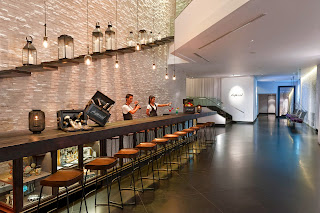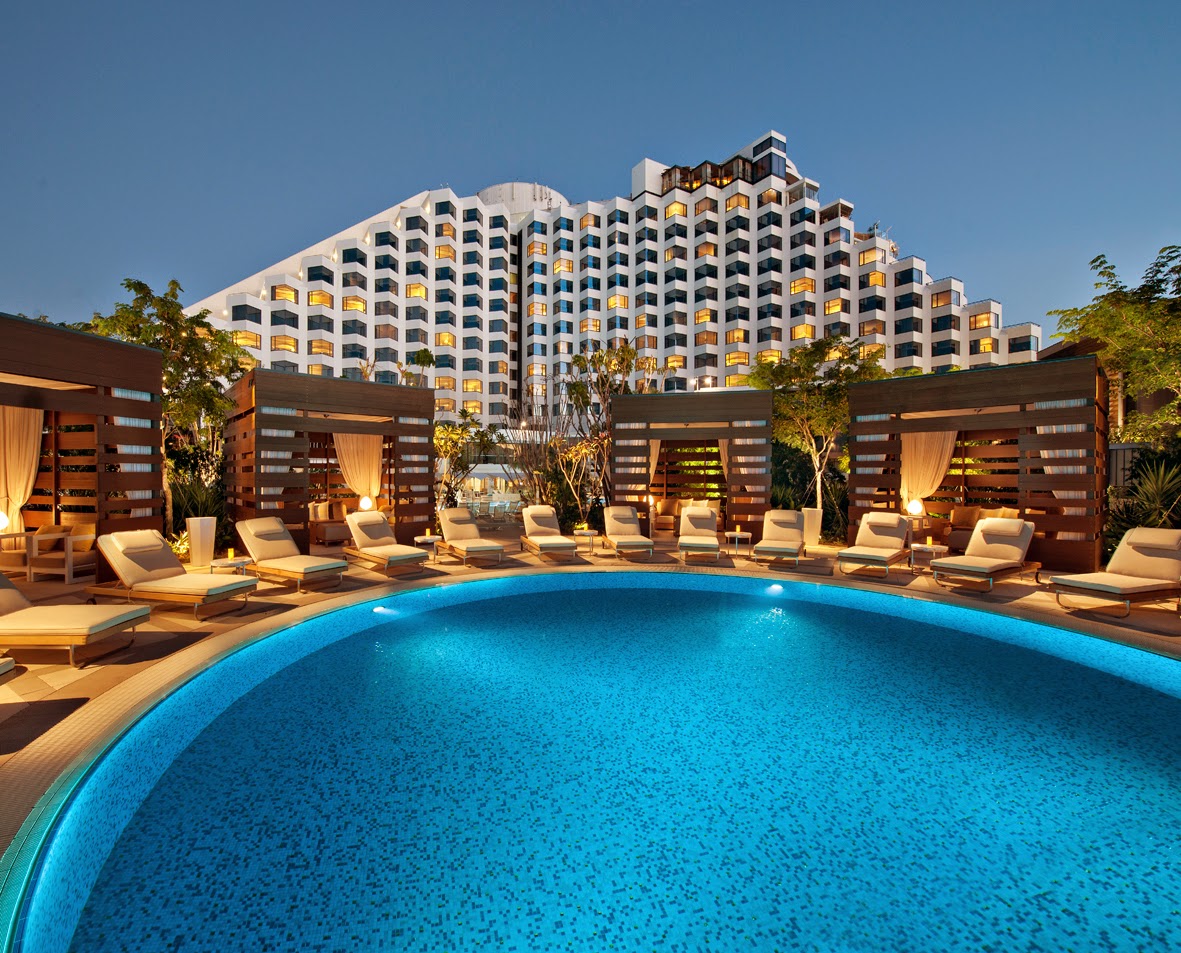Neil Perry, Shannon Bennett and Matt Moran may have higher profiles at home, but Newcastle-born and raised Brett Graham is Australia’s most successful chef on the global stage.
Graham began his cooking career at Scratchley’s, “a simple Newcastle
fish restaurant”, at the age of 15, but now has two Michelin stars at The Ledbury, Notting Hill, London, which is regarded as one of the best restaurants in Europe. He also has a share in acclaimed gastro pub The Harwood Arms.
 |
| Brett Graham |
Now 34, the man known to his friends as ‘Bazza’ worked under notoriously harsh taskmaster Liam Tomlin at Banc restaurant in Sydney, winning the Josephine Pignolet Award – for which he earned a trip to Britain. Working at The Square under chef Philip Howard, he was named ‘Young Chef of the Year’ in 2002.
For eight years, The Ledbury has been at the top level (it currently ranks No. 10 in Restaurant magazine’s new 2014 world’s 50 best restaurants list) and unlike many other celebrity chefs, Graham is almost always behind the pans, although he took a few days off to cook at a $1000-a-head Starlight Foundation fundraising dinner - his first trip to Sydney for five years - and for Qantas epiQure club members at the luxurious rural getaway Emirates Wolgan Valley Resort and Spa late last year.
He also found time to host a cooking class for Hunter TAFE students as part of his Brett Graham Scholarship program, which helps young Australian chefs reach the next level.
I sat down with Brett during his busy schedule to find out about his rise through the restaurant ranks and conducted this interview that first appeared in Selector Magazine: www.selectormagazine.com.au/
What was the biggest break you have had in your career thus far?
Winning the Josephine Pignolet Award for young chefs when I was working at Banc. I won a trip to London, a city I knew nothing about at the time, and ended up working at The Square, a two-hat Michelin restaurant in Mayfair. It was a different world. I learned a lot while I was working with Liam Tomlin – he ran a tight ship, but he was an amazing guy and it was a terrific learning experience. He was a fantastic mentor, a hard worker and it was the most important part of my career. He finished off a lot of chefs and taught them what it means to run a successful restaurant.
You only come back to Australia very occasionally. Any plans to return and open a restaurant at home?
Not in the immediate future, no. I’ve got a successful restaurant and am responsible for a lot of staff. I take that very seriously. I have an English wife, Natalie, and that is where my life is right now. We bought our first house in Richmond a couple of years ago and are nicely settled.
What is the key to getting access to the best produce? |
| Brett Graham and Neil Perry at Wolgan Valley |
You have to build long-term relationships with your suppliers; that’s a major key to sourcing the best. You want produce that is prepared to your specifications, which is why I send my suppliers Christmas presents rather than the other way around. You want consistency and quality all the time. I’m on the phone from 7.30am each morning talking to suppliers to find out what is available for that night’s service.
What is the major difference between menus in Australia and those in Britain?
There is a real appetite in Britain for wild game and fowl. I’m a very keen hunter and I see a growing interest in dishes using ingredients like venison, pheasant and partridge. Australians should certainly be eating more kangaroo. I’m not into the idea of eating wombats or possums, but kangaroos need to be controlled and they produce very good quality meat.
What is the key to your approach?
It has to be seasonal produce; produce that reflects what is happening outside at that particular time. I also want my staff to go the extra mile to ensure that everyone dining at The Ledbury has the best possible experience. Eat seasonally, eat locally.
You’re one of the hardest workers in the industry. What drives you?
I like to be in my own restaurant, and like to be at the pans. I want to be there for lunch and for dinner and we do six lunches and seven dinners each week. I do have to have a day off every now and then. I only do charity stuff away from The Ledbury. I’m not into going to different events as a celebrity chef. All that means is that the standards at your own restaurant will eventually drop. I don’t care about what restaurant critics have to say about what we do, either – the most important reviews we get are from our customers. I’m not interested in looking after celebrities. The most important people are our regulars. I might recommend a steak medium-rare, but if a customers wants a steak well done, then that’s what he is going to get.
Are you a believer in wine and food matching?
We have four sommeliers on our team, which shows the importance we place on wine service. We have over half a million pounds worth of wine in our cellars, so we have some lovely mature wines. We tend to drink wine older in England than people do here where a lot of people are drinking 2011s and 2012s. It’s an eclectic list with anything from Bass Phillip to Felton Road and, my favourite, Château Lynch-Bages. Australian wine sells well, but not amazingly.
What has struck you about the hospitality industry while you have been at home?
It worries me that training here seems to have been cut back. Australian chefs have always had a reputation for being the most well-organised, the best drilled, but I think England now is putting more emphasis on training and is going forward, where Australia is going backwards. What Australia has to do is stop cutting back funding for TAFE training. It is so important for young people to get the best possible training and that’s why I’m so passionate about my scholarship program. Front of house also needs more recognition. It is a real skill to get waiting a table right.
What advice would you have for aspiring young chefs? |
| The Ledbury lusciousness |
Travel internationally. It broadens the mind and exposes you to different ideas and flavours. I’m always happy to give talented people a chance. Any Australians who want to work at The Ledbury for a week or two should be encouraged. You have to give back.
How important would it be for you to win a third Michelin star and where do you see yourself in 10 years’ time?
If it happens it could change a whole lot of things, but the game plan is not about a third star, or about better cutlery, or putting more truffles on a dish, it is about making The Ledbury a terrific place to enjoy dinner. In 10 years’ time? No idea mate. Some part of me would love to have a farm, but that’s just a dream.





















